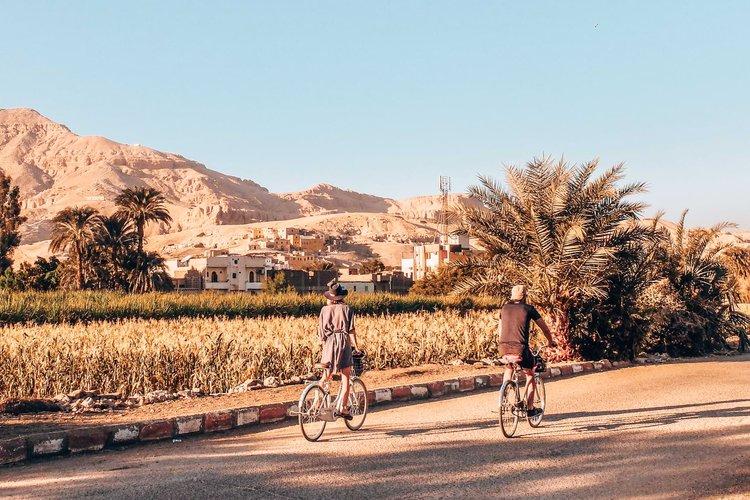Sun-Dried Tomatoes In Luxor
The land turns red
Each year, as spring changes to summer, something special happens in Luxor. Under the same sun that once warmed the paths of pharaohs, the earth changes — not with sandstorms or illusions, but with something much more colorful.
The land turns red.
This event isn’t a festival or a natural occurrence. It’s sun-dried tomato season, and it paints parts of southern Egypt in vibrant crimson.

A Tradition Written in Sunlight
Luxor is famous for its ancient temples and tombs, but it also has a hidden side: it is one of Egypt’s top areas for farming, especially for tomatoes.
From late April to July each year, farmers harvest tomatoes meant for drying. These tomatoes are special; they are firm, brightly colored, and produce a lot of fruit. After picking, the farmers slice the tomatoes, sprinkle salt on them, and lay them out in large open fields under the strong sun of Upper Egypt.
Photographer Mohamed Shukri captured this process in a beautiful photo series. The result is stunning: red tomato slices cover the fields, creating a breathtaking view. When seen from above, it looks like a giant red carpet spread across the land.
Luxor Tours & Activities
Looking to save some costs on your travel? Why not join a shared group tour to explore Luxor, Egypt? Here are some activities you might be interested in:

Why Luxor?
The answer lies in the sun — and the soil.
Luxor has over 11 hours of sunlight each day and low humidity, making it perfect for natural dehydration. This means there is no need for industrial dryers or chemical preservatives. This ancient process is efficient and eco-friendly.
Currently, Luxor produces more than 80% of Egypt’s sun-dried tomatoes for export. The remaining tomatoes come from nearby areas like Qena and Aswan, covering about 500 feddans (or around 209 hectares) of farmland.

From Field to Fork: The Drying Process
Here’s how the process works:
1. Growing and Harvesting: Farmers grow specific tomato types that are ideal for sun-drying. Many have contracts with drying companies.
2. Slicing and Salting: After harvest, workers hand-slice the tomatoes and add salt. The salt helps preserve the tomatoes and improves their flavor.
3. Sun-Drying: The sliced tomatoes are placed on clean surfaces and left in the sun for several days. This process removes moisture while enhancing flavor.
4. Packing and Exporting: Once dried, the tomatoes are sorted and packaged in clean facilities, often with areas free of children to ensure food safety. From there, they are sent to markets in Europe and the Gulf.

Sustainable by Nature
Luxor dries tomatoes using natural energy instead of industrial processes. They rely on the sun, wind, and traditional techniques, avoiding fuel and heavy machinery.
This age-old method meets modern sustainability goals. For consumers seeking low-impact, organic options, Egypt’s sun-dried tomatoes are a guilt-free gourmet choice.
A Photographer’s Dream
When Mohamed Shukri posted his photos online, people on the internet became excited. The bright red colors stood out against the sandy soil, the rows were organized, and the workers moved in a quiet, rhythmic way. This showed a different side of Egypt that tourists often miss.
> “I wanted to show the beauty of everyday life here,” Shukri said in a post. “Temples are great, but this is living heritage.”

Travel Tip: How to See It Yourself
If you plan to visit Luxor, try to go between May and early July. Ask locals or your guide if you can visit a tomato-drying field.
These fields are usually just outside the main tourist areas. Visiting one gives you a unique and real look at rural Egyptian life. You can meet local farmers, take great photos, and see the work that goes into making sun-dried tomatoes.
Did you know that
By purchasing through our links, you support us at no additional cost.
Thank you for your support. ♥️






